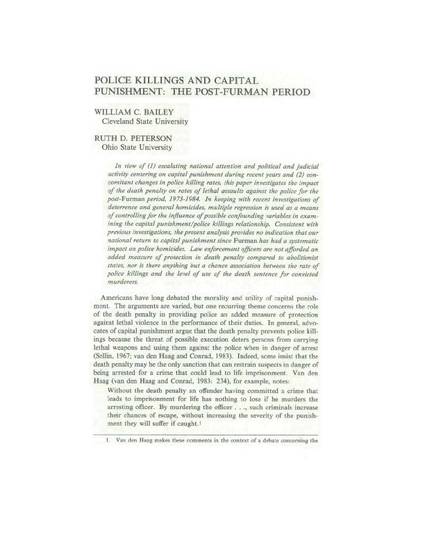
In view of (1) escalating national attention and political and judicial activity centering on capital punishment during recent years and (2) concomitant changes in police killing rates, this paper investigates the impact of the death penalty on rates of lethal assaults against the police for the post-Furman period, 1973–1984. In keeping with recent investigations of deterrence and general homicides, multiple regression is used as a means of controlling for the influence of possible confounding variables in examining the capital punishment/police killings relationship. Consistent with previous investigations, the present analysis provides no indication that our national return to capital punishment since Furman has had a systematic impact on police homicides. Law enforcement officers are not afforded an added measure of protection in death penalty compared to abolitionist states, nor is there anything but a chance association between the rate of police killings and the level of use of the death sentence for convicted murderers.
